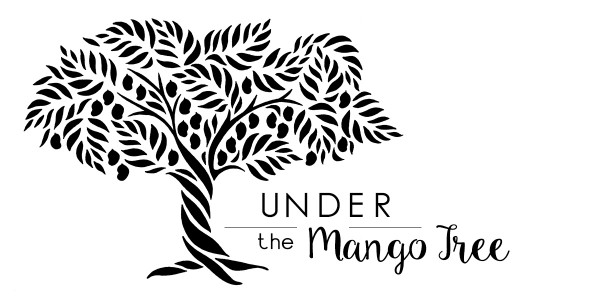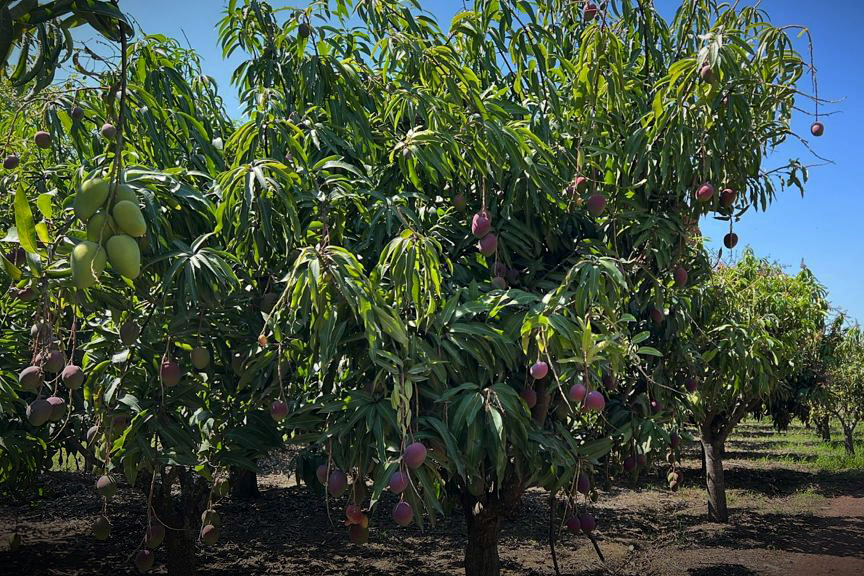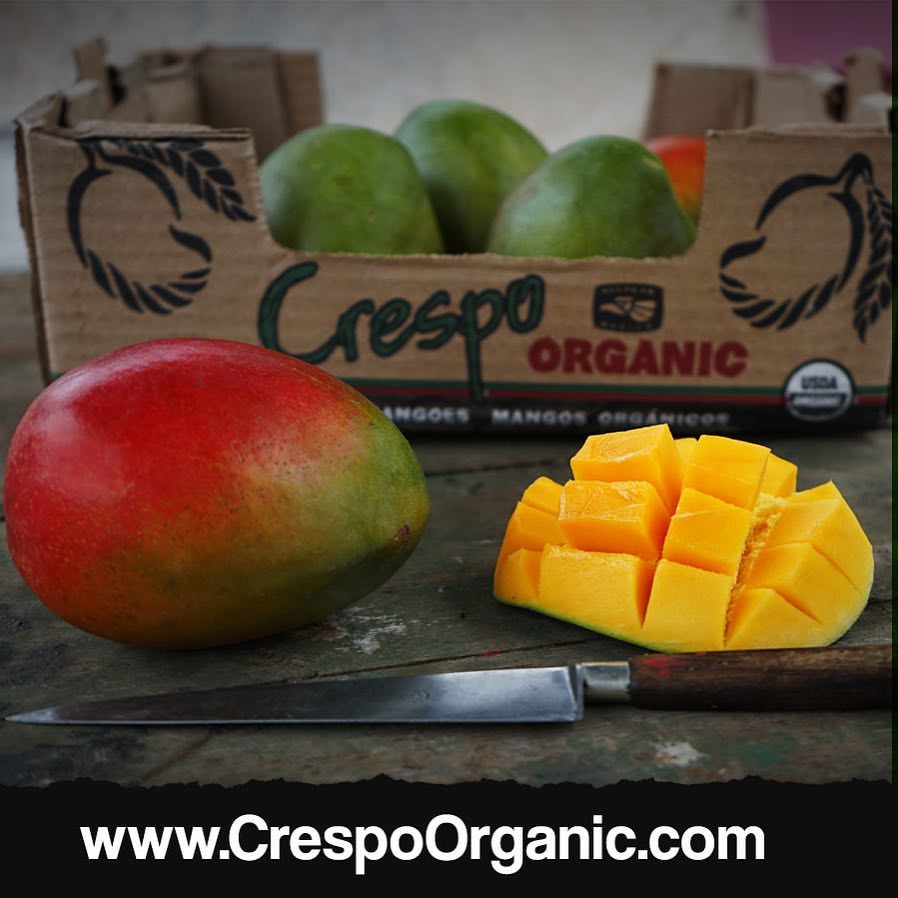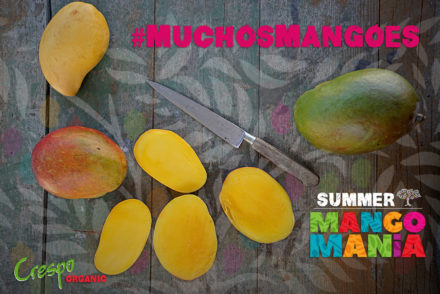The lack of small fruit is real and size Up-ortunities are too!
There is a significant and serious lack of small fruit coming out of mango orchards in the south (Chiapas & Oaxaca) right now. As a result, there is a lot of confusion and panic in the market. This is mostly because pricing remains higher than average and bigger fruit and higher prices mean more expensive pieces of fruit.
We’ve received new intel, including photos and video from our Crespo boots on the ground or in this case Roberto Crespo. His information has been coming in the last several weeks as we’ve been trying to better access the small fruit situation. It’s been coordinated and agreed upon by all Crespo’s as well as several other large and medium sized conventional and organic producers in the south. It all true, the small fruit shortage!
With some of the southern second bloom sets not as prolific as anticipated, Michoacán being late to the mango party, and Peru basically out of the equation, the timing of this all collides with a significant rise in mango demand in the early Mexican season, which has been trending upward for a few years now. The small fruit missing from the equation on top of all of this is creating a lot of problems in the industry as a whole.
Let’s start by stating the obvious: organic mango orchards don’t produce bigger or smaller fruit than that of neighboring conventional orchards. When it comes to blooming, fruit set, development, size, and general quality concerns, organic and conventional mango orchards from Mexico tend to suffer from the same afflictions.
Organic details tend to be more about total volumes or the sum of availability of all organic producers, which is a varied and hard to pinpoint number. I know it doesn’t fit the standard crop report formula we are used to, which often makes more sense for other commodities or countries of origin. This is why, when it comes to providing crop updates, I tend to speak of Mexican mango crops in a general way with additional Crespo Organic’s specifics as needed.
The conventional markets can put significant pressure on organic pricing (high and low), so paying attention to the entire mango crop (problems and opportunities) gives us a clearer picture so as to make the best decisions for growing our Crespo Organic Mango programs and selling #MuchosMangoes!
General Mango Crop Update
The southern regions of Chiapas and Oaxaca are producing very large fruit. This is not uncommon for these regions, which historically produce “bigger” fruit. A lot of change has taken place in climate and demand patterns that seem to be challenging volume ease for most of the Mexican regions onsets.
I have spoken often about the crop’s unpredictability due to climate change, and the irregularities that make it difficult to gauge accurately. This is real and creates added layers of complexities on the production side. The patterns that used to exist are changing and gauging and predicting the emerging patterns has proven confusing to most growers, if patterns is even an accurate description anymore. Each varietal and microregion within larger regions behave wildly differently. There are many micro regions in the south.
Typically, Michoacán, which tends to produce smaller fruit, chimes in and starts production in time for the larger March demands that commence once Peru ends their season. This year Michoacán is late (it was last year, as well). Additionally, Peru ended a bit earlier than normal and demand is higher than ever.
Despite the fact that growers have invested significantly in increasing production in the southern regions, demand has trended higher than supply for the last several years during this timeframe. El Grupo Crespo has expanded production by several hundred hectares in the last several years in these regions and added an additional packhouse in Oaxaca to increase output along with Empaque Don Jorge II.
Despite sizing and volumes being incredibly hard to predict, the industry is clear that big fruit is predominant for now, and small fruit is more than scarce. So that has to be the biggest take away from this CROP REPORT – those that can adjust to the trees will have the advantage!
Taking advantage of the fruit we do have seems to be the smart move considering demand. Consumer interest continues to grow rapidly as shoppers begin to view mango consumption as ordinary. Mass market programs are starting earlier and earlier and continue growing and growing. This is where the Crespo Organic specificities are important.
Crespo Organic Specificities
Crespo Organic supplies are strong and generally in line with our programs, including the new and expanded programs currently playing out. We are, like everyone else, short on small fruit but having a bit of an easier time than conventional sellers, as the organic market is a bit more flexible on sizing. Since we own our own product, we are able to make price adjustments if and as needed to keep the programs priced accordingly as we move around in size; this is the beauty of long term partnerships with retailers, wholesalers and processors. Since the majority of what we do is on a program basis, we are more focused on keeping programs stable and growing them; knowing the more volume and some sizing liberation will come after Easter, around the first week of April.
We have been successfully promoting our Organic Ataulfo program in the popular larger sizing for several weeks and continue to keep most of the smaller Ataulfo customers happy with our quality and/or an occasional price break for their size up efforts. We all invest more in our program together and move through the challenges with greater ease.
Quality on the Ataulfos improves with the second bloom fruit, so we expect the “look” of the fruit to be even better in the coming weeks. Flavor wise, brix is increasing rapidly, and if you are one of those folks who manage to keep this tropical temperature loving mango warm (50 -55°F), you should be experiencing the beautiful complexity of flavor that the Ataulfo is known for.
Tommy Atkins are plentiful with the same configuration of size issues. 12cnt sizing is pretty rare and tens are extremely tight. 8-9cnts are plentiful and promotable along with extra promotional opportunities on 6 and 7cnts.
Sugar level is intensifying, and the round fruit are quickly becoming exceptionally sweet and tasty!
We will continue to see a lack of small fruit for the rest of the southern regions’ seasons, but there is and will continue to be ample opportunities for promotions, in particular for average or larger sizes.













No Comments